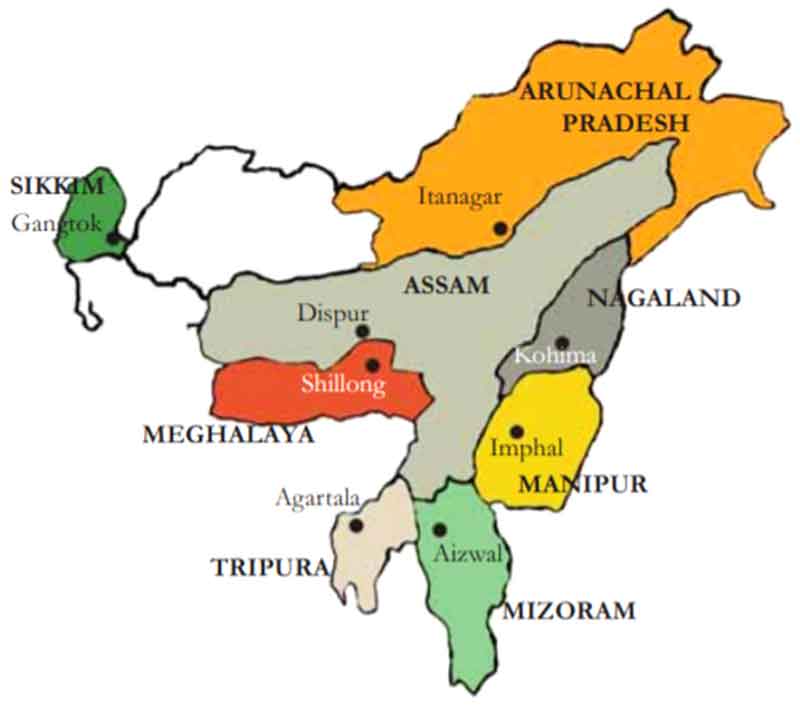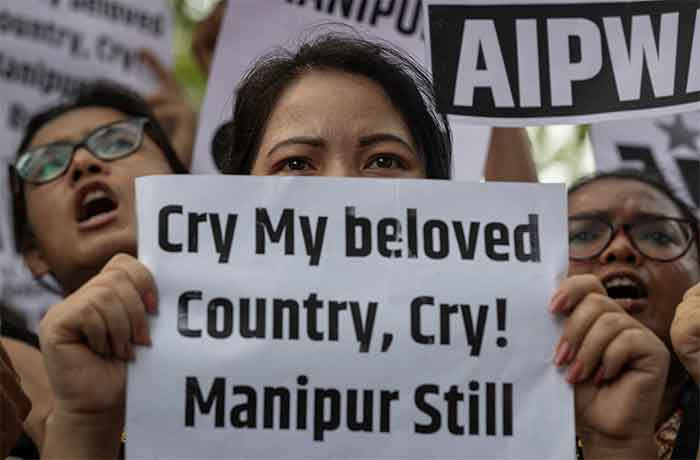
Thirty-eight years have passed since Arunachal Pradesh and Mizoram were granted statehood, yet these northeastern states continue to grapple with significant developmental challenges. Despite their rich cultural heritage and strategic importance, both regions face persistent neglect in infrastructure, healthcare, education, and economic opportunities. This prolonged oversight has not only hindered their progress but has also fueled separatist sentiments among the local populations.
Arunachal Pradesh and Mizoram suffer from inadequate infrastructure, particularly in road connectivity. The hilly terrains and dense forests pose natural challenges; however, the lack of political will and investment has exacerbated the situation. Many border districts in Arunachal Pradesh remain isolated due to poor road networks, making it difficult for residents to access essential services like healthcare and education. Similarly, Mizoram’s infrastructure development has been sluggish, with several areas lacking proper transportation facilities, which hampers economic growth and integration with the rest of the country.
The healthcare systems in both states are underfunded and understaffed. In Arunachal Pradesh, residents often have to travel long distances to reach the nearest medical facility, which may still lack specialized care and essential medical supplies. Mizoram faces similar issues, with hospitals struggling due to insufficient funding and a shortage of medical professionals. This neglect has led to a dependency on neighboring states for basic healthcare services, further highlighting the systemic failures in addressing the health needs of these regions.
Education in these states is marred by disparities, particularly concerning gender. Arunachal Pradesh exhibits a significant gender literacy gap, reflecting the systemic neglect of women’s education. This disparity limits opportunities for women and perpetuates cycles of poverty and dependence. In Mizoram, while literacy rates are relatively higher, the quality of education is compromised by inadequate infrastructure and resources, affecting the overall educational outcomes.
Economic opportunities in Arunachal Pradesh and Mizoram are scarce, leading to high unemployment rates, especially among the youth. The lack of industrial development and limited access to markets due to poor infrastructure have stifled economic growth. Agriculture, which is a primary livelihood source, suffers from traditional practices and minimal technological intervention, resulting in low productivity. Consequently, many young individuals migrate to other parts of India in search of better employment prospects, leading to a brain drain and further economic stagnation in their home states.
The central government’s policies have often overlooked the unique cultural identities of these states. For instance, the border fencing along the Mizoram-Myanmar boundary has disrupted traditional ties among Mizo tribes, severing connections with their kin across the border. Such actions, undertaken in the name of national security, have disregarded the cultural and social fabric of the local communities, leading to feelings of alienation and resentment.
The prolonged neglect and systemic discrimination have sown seeds of separatist sentiments in both states. In Mizoram, historical grievances led to the emergence of the Mizo National Front (MNF) in the 1960s, which sought independence from India. Although a peace accord was signed in 1986, the underlying issues of neglect and marginalization persist, keeping the embers of separatism alive. In Arunachal Pradesh, groups like the United Liberation Front of Asom (ULFA) have found support among locals who feel disenfranchised and ignored by the central government. These movements are not mere rebellions but are rooted in genuine grievances stemming from decades of apathy and broken promises.
Geopolitically, Arunachal Pradesh and Mizoram hold significant importance due to their international borders with countries like China and Myanmar. Despite this, the strategic infrastructure in these regions remains underdeveloped. The lack of robust road networks and communication facilities not only hampers economic development but also poses security risks. The government’s failure to prioritize infrastructure development in these border areas reflects a short-sighted approach, undermining both national security and regional growth.
Subscribe to Our Newsletter
Get the latest CounterCurrents updates delivered straight to your inbox.
The journey of Arunachal Pradesh and Mizoram since attaining statehood has been fraught with challenges arising from systemic neglect and indifference. To rectify historical injustices and pave the way for a prosperous future, it is imperative for the government to adopt a holistic development strategy that addresses infrastructure deficits, enhances social services, respects cultural identities, and promotes economic growth. Only through such concerted efforts can these states overcome their current predicaments and achieve their full potential within the Indian Union.
Muhammad Wasama Khalid is pursuing MPhil in International Relations at the National Defense University (NDU). He has a profound interest in history, politics, and current affairs. He tweets at @WasamaKhalid and can be reached at [email protected].













































